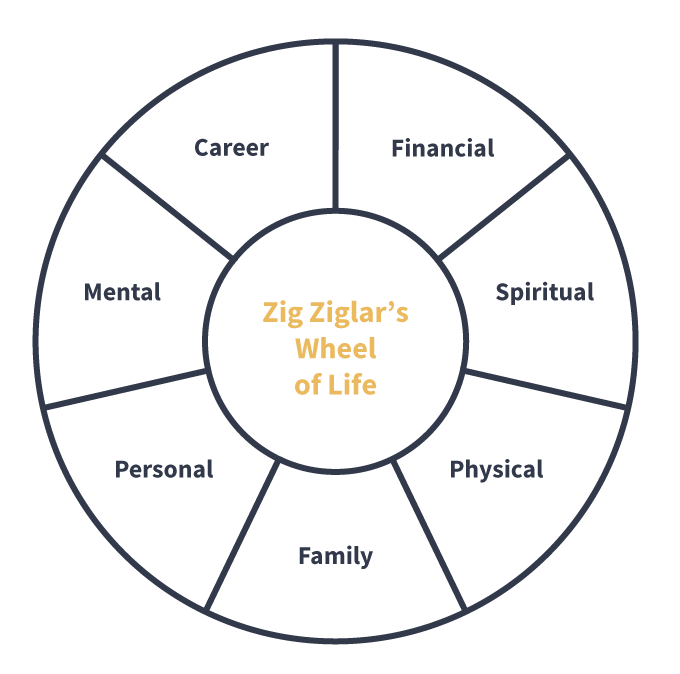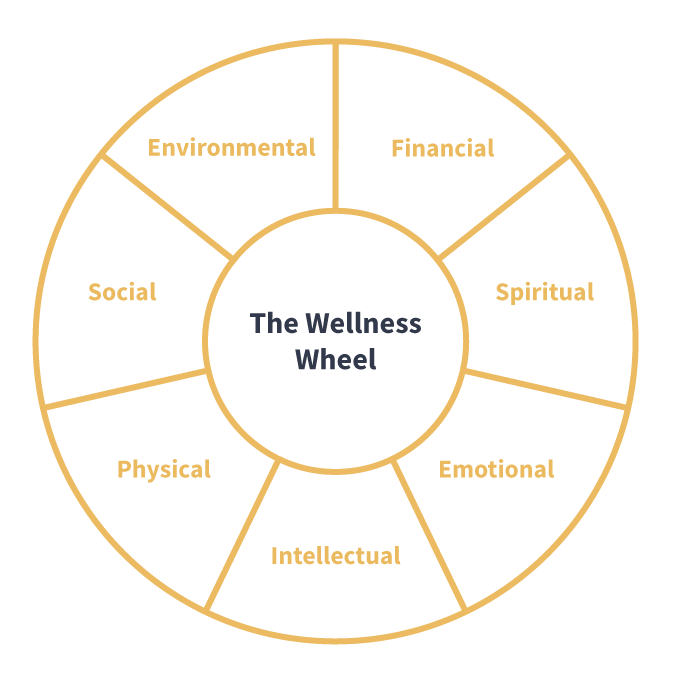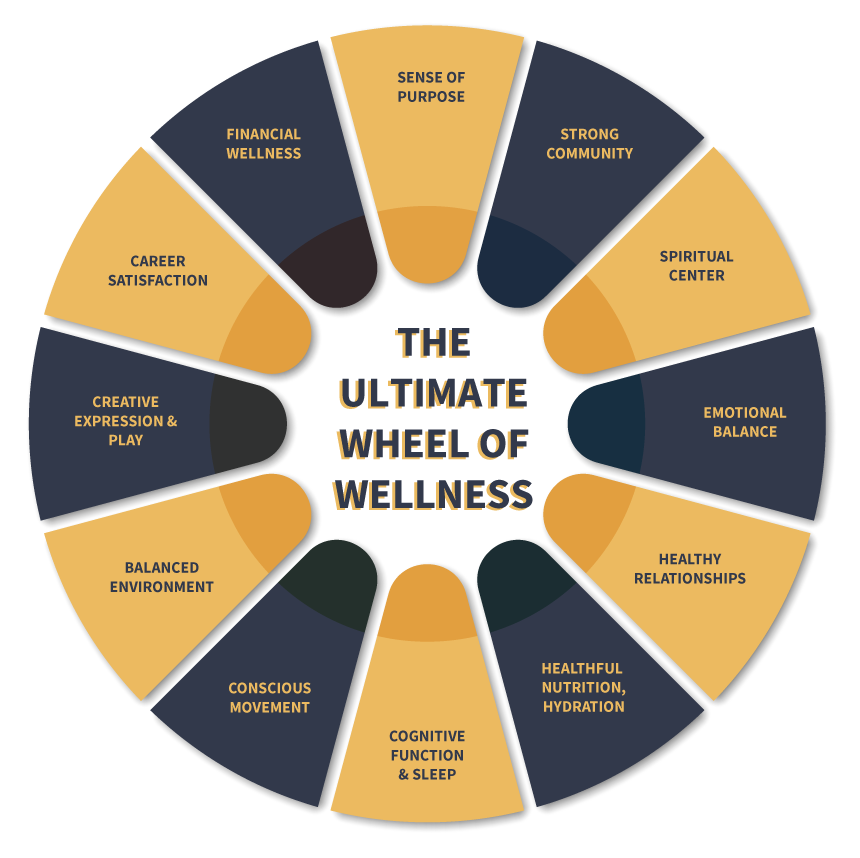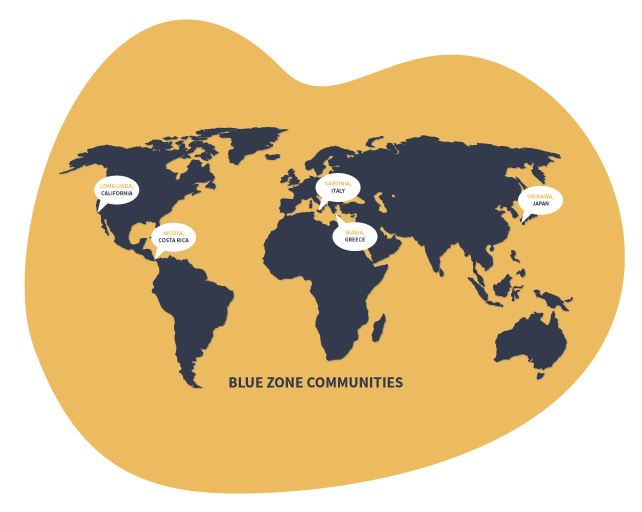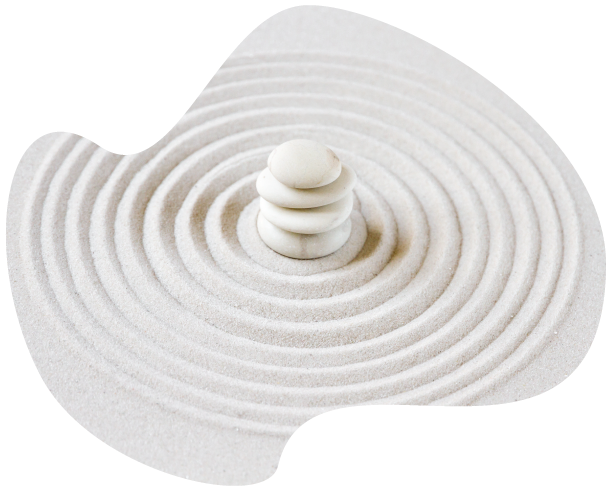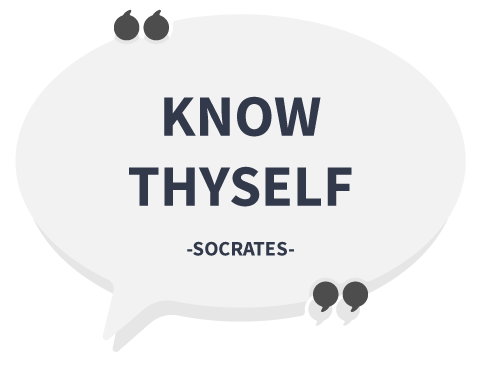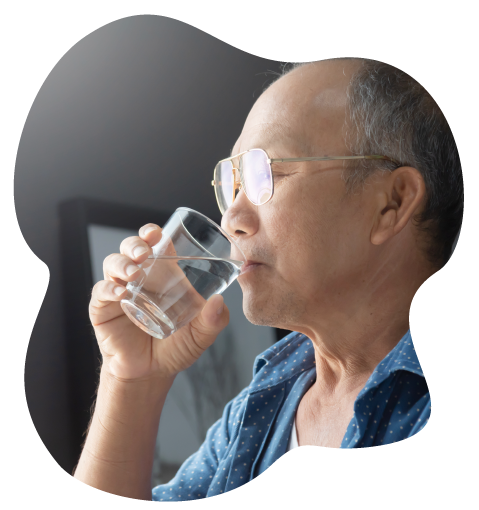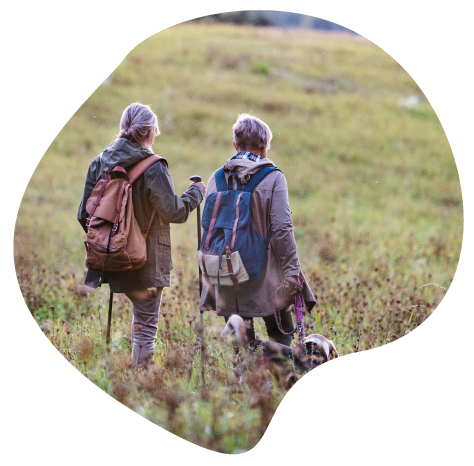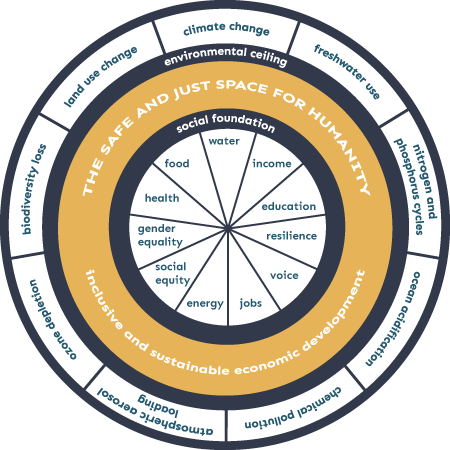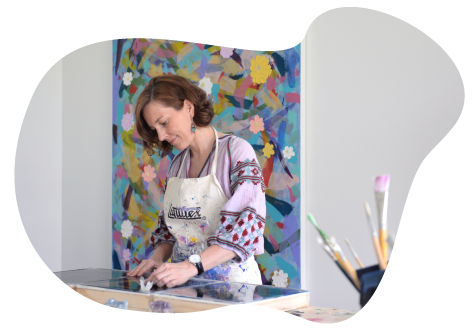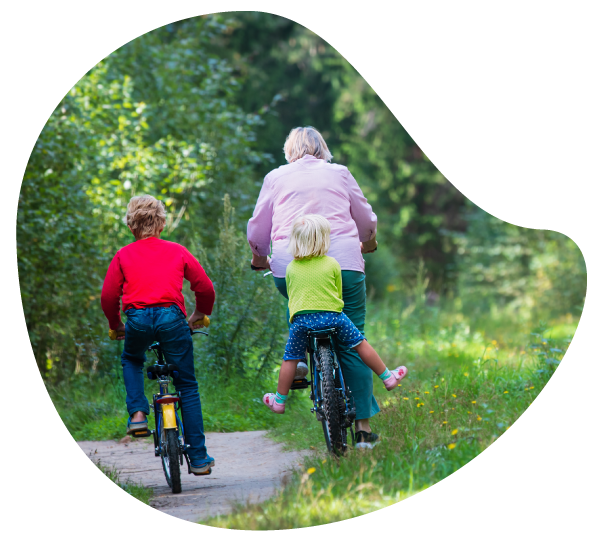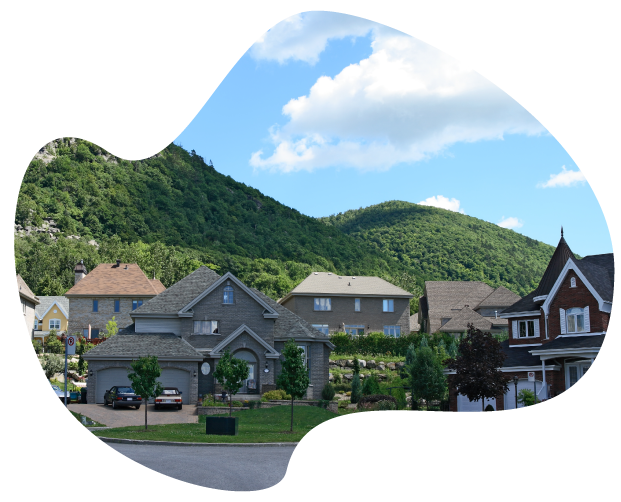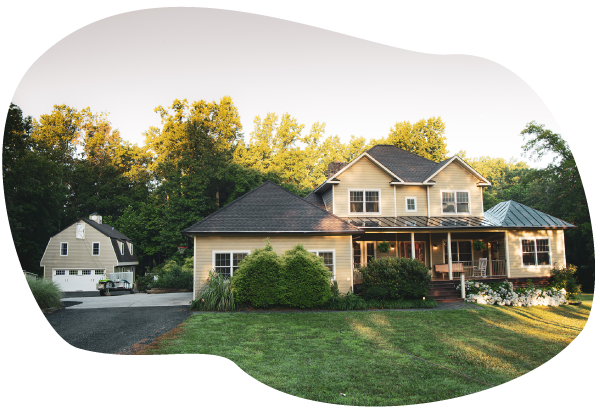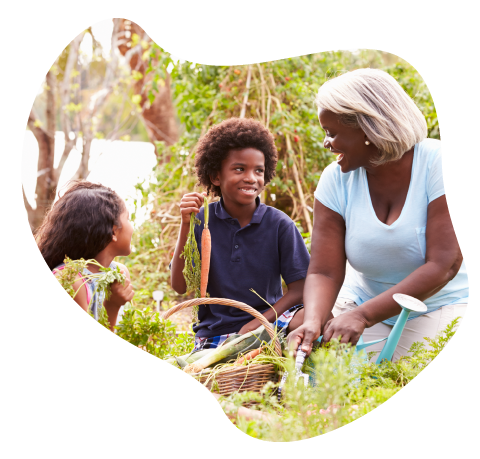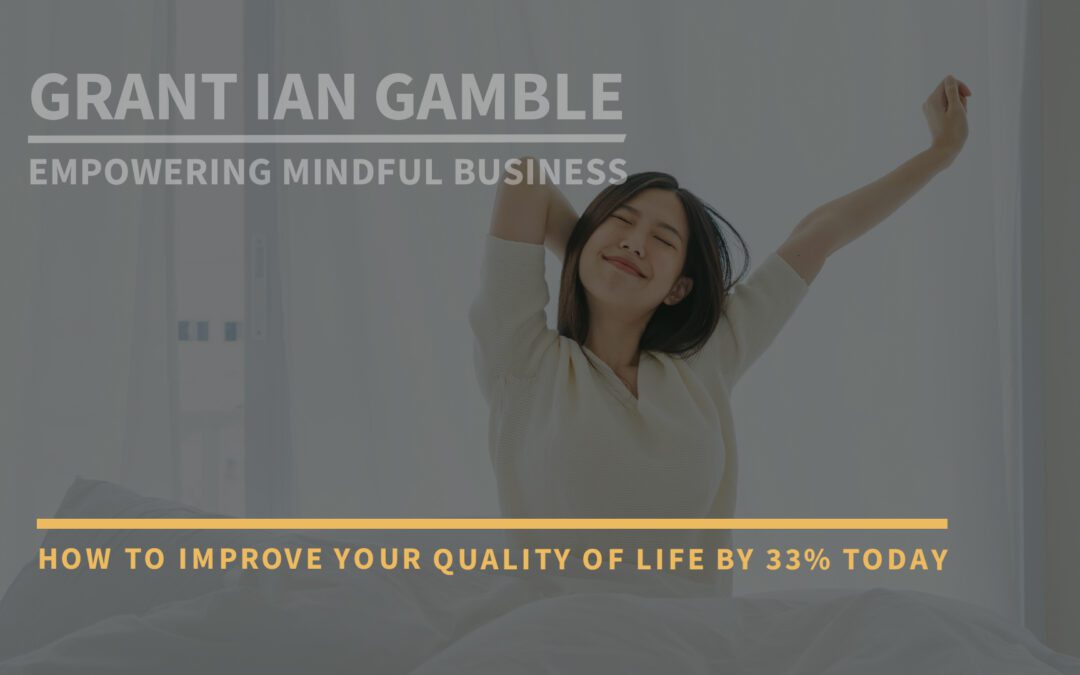
How to Improve Your Quality of Life by 33% Today
How to Improve Your Quality of Life by 33% Today

 Grant Ian Gamble is an international business strategy and growth consultant, best-selling mindful leadership author, speaker and wellness expert. He works in a broad array of industries helping companies build teams, navigate change and drive growth. He has over 35 years of experience in the health and wellness sectors.
Grant Ian Gamble is an international business strategy and growth consultant, best-selling mindful leadership author, speaker and wellness expert. He works in a broad array of industries helping companies build teams, navigate change and drive growth. He has over 35 years of experience in the health and wellness sectors.
Please note that I do NOT receive any compensation for product recommendations I make in this article. My recommendations are purely based on personal experience and are not commissioned.
I touched on the importance of sleep as it relates to Mindful Leadership in my article, “Three Foundations & The First Step Toward Mindful Leadership.” As I explained in that piece, quality sleep is one of the central foundations of optimal physical and emotional health, yet it is underrated by some and elusive for many.
As with many things, getting great sleep can be a process.
The first step in this process is truly understanding and appreciating the importance of sleep to our health and emotional wellbeing.
In a study conducted at the University of Pennsylvania, researchers found that subjects who averaged only 4.5 hours of sleep a night for a week felt more stressed, angry, sad and mentally exhausted. Mood shifts and the added stress of sleep deprivation can in turn exacerbate the issue, and many people find themselves in an ever-tightening spiral to mental and emotional exhaustion. Not to mention that chronic insomnia can develop into a clinical mood disorder.
Researchers at UC Berkeley have also shown that sleep deprivation negatively impacts the regions of the brain that help you understand people’s underlying motivations and intentions. This can significantly impact your capacity for empathy and relationships can be further strained when these filters are not in place.
The process of improving the quality and/or quantity of your sleep can start by doing an inventory of your sleep habits, sleep environment, and reviewing your exercise and nutritional status. Run through the inventory below to see where you should focus your efforts in order to improve your sleep outcomes.
Current Sleep Status:
Do you:
- Get an average of 49-56 hours of sleep per week (7-8 hours per night)?
- Fall asleep in 30 minutes or less?
- Wake up no more than once per night?
- Sleep in a cool, dark and quiet environment?
- Sleep on a high quality mattress and pillow?
- Go to bed at the same time, and get up at the same time, most days?
- Avoid screen time before going to bed?
- Limit your activities in bed to sleep and sex?
- Limit your daytime naps to an ‘as needed’ basis?
- Limit food intake in the 4 hours before going to sleep?
- Avoid caffeine consumption after mid-afternoon?
- Avoid alcohol, marijuana or nicotine use 4+ hours before going to bed?
- Exercise at a reasonable intensity most days?
- Get 10-30 minutes of unobstructed sunshine (no sunglasses) while walking or running most mornings before 10am?
- Have the ability to calm your mind before trying to fall asleep?
If you answered ’Yes’ to all or most of these questions, you likely have a great handle on the many elements of great sleep.
If you answered ‘No’ to 5 or more of these questions, there is a very real potential to improve the quality of your sleep.
If you answered ‘No’ to 10 or more of these questions, implementing some changes in your sleep routine will no doubt bring some significant gains.
When seeking great sleep, no single thing typically tips the scales in your favor. Often, it is a process of refinement. My advocacy is to always go for the easy stuff first, or the ‘low hanging fruit’. So after reviewing the above list, what are the easiest challenges that you could tackle first? If you’ve picked something you’re open to working on, go to the relevant section below to see if any of the insights or tips may help you on this first step of your journey to improve your sleep patterns.

1. Are you getting an average of 49-56 hours of sleep per week?
Sleep experts have determined that getting an average of 7-8 hours of sleep a night is optimal.
In turn, if you miss some sleep, try to supplement with a little extra when you can, because there is a cumulative benefit. The amount of sleep needed can vary based on age; newborns need up to 20 hours a day and infants need 14 or more hours daily. Kids 5-12 need an average of 10 hours of daily sleep and teens need ideally 9 hours of sleep daily. Interestingly, teens need a different window of sleep to adults. Recent research determined that teens’ production of melatonin begins a couple of hours after ours, and that sure does explain a few things.

2. Do you fall asleep in 30 minutes or less?
I used to think that because I could fall asleep as soon as my head hit the pillow, that was a good thing. Apparently, not necessarily. Falling asleep immediately can be a sign of physical and/or mental exhaustion or even a sleep disorder such as sleep apnea, because the quality of your sleep may be impaired and you’re accumulating a deficit of sleep.
Experts say that it should ideally take 5 to 15 minutes to fall asleep. If it takes much more than 20-30 minutes, this may be a sign of insomnia.
Oftentimes, we go to bed and our mind is still more active than it should be in order to fall asleep. Maybe we just turned off the TV or put down the phone. Or maybe we’re recounting the events of the day and are pondering the imponderables? Regardless, it is incredibly important to be able to calm your mind and that can best be supported by your mindfulness practices. If you meditate before bed or use a breathing technique to shift your focus, it can be a great way to slow your roiling mind. I cover these options in more detail in point 15.

3. Do you wake up no more than once per night?
Items 4 through 15 on this list can assist on this point, however other factors might be at play.
If you’ve had too much fluid before going to bed, that can be a factor.
I haven’t dived into hydration as yet, but I am a big advocate of drinking plenty of water throughout the day and if your body is well hydrated through conscious hydration throughout the day, you shouldn’t need to rehydrate last thing at night.
Other health issues may be impacting your sleep and these can range from urinary tract infections to an overactive bladder. According to the Mayo Clinic, undiagnosed or untreated, type 1 or type 2 diabetes could also be a factor. If you have too much sugar in your bloodstream, your body is forced to extract fluid from your tissues. This in turn makes you thirsty and may prompt you to drink prior to going to bed and disrupt your sleep.

4. Do you sleep in a cool, dark and quiet environment?
Does this sound like a cave-like setting? Not quite, but this does hark back to our primordial days.
Our bodies’ sleep patterns are still attuned to factors our ancestors contended with on a daily basis.
Taking advantage of natural light available to hunt, forage and farm was a non-negotiable. Naturally, these cycles are embedded in our DNA and the artificial light we’re subjected to every day can upset our natural sleep rhythms.
When it comes to your sleeping space, try and make it as dark as possible. If your partner or child needs a light left on or likes to leave the TV on before they fall asleep, try to persuade them to swap these practices for healthier options. If your arguments fall on deaf ears, think seriously about an eye mask.
Sound is also a big factor. When we’re asleep, our body still hears.
Recent studies have determined that our brain actually responds to auditory stimulation while we’re asleep. This again relates to more historical contexts where our body would need to be able to hear threats while we’re sleeping. So reducing, or drowning out background noise is critical. If you’re in a noisy environment and can’t reduce the chatter, a white noise generator can help. Fans can also produce some white noise and evaporatively cool you at the same time.
This leads to the last point: temperature.
Like music, temperature is a very personal thing. What is cool and comfortable for one person can be downright cold for another. If you sleep with a partner and you have different preferences, try and find a point of compromise that can allow you both to be comfortable. Some high tech beds have the ability to heat and/or cool each side independently. If you can’t settle on a room temperature, maybe a high tech bed solution can help you solve the problem. For example, the Sleep Number DualTemp system. Or there is always an extra blanket for the chilly partner. What does seem to be universal is that when it’s hot and muggy, it’s hard for most people to sleep; so do what you can to create a cool, temperate sleep environment for you and your family.

5. Do you sleep on a high quality mattress and pillow?
Truth: I am a mattress and pillow snob, because I truly believe that we should all invest in the best mattress and pillow we can afford.
We spend 1/3 of our life in bed and the quality of our sleep can have some significant benefits and side effects.
Over the years, I have spent a small fortune on beds and tried everything from high tech waterbeds to modern futons. In the end, I landed on the Sleep Number bed system. This system isn’t going to suit everyone’s taste or budget, but I have had a phenomenal experience with this bed and the company. I am careful not to recommend particular products, unless I can speak to their performance over time and have other reference points. (I also don’t receive any compensation for these recommendations). I’ve referred a number of friends and associates to the Sleep Number bed and those that have purchased them have been incredibly happy. Being able to adjust elements of your bed from individual firmness to temperature differences can be invaluable for couples who have disparate preferences when it comes to their sleeping environment.
The bottom line is: get a great mattress. Try it out for an extended period of time.
Many companies give a window of time for you to test a high quality mattress and to return it if you’re not happy with it. Don’t be afraid to send it back and get a different one. Buying a great bed is a long term commitment. On that note, many components break down over time: springs can fatigue, foam and down can compress, etc. Much like running shoes, you should update your bed regularly (maybe not as regularly as your running shoes). Recommendations vary greatly depending on the bed, but every 7-10 years is a good rule of thumb.
And now to the pillow. This can be as challenging as finding the right mattress. I have experimented a lot, but what suits me will likely not suit others. However, the common threads on a pillow are important. Firstly, do you sleep on your back or your side, or do you change position during the course of the night? If you sleep on your back, you’ll likely want a thinner pillow, and ideally some neck support. There are contoured foam pillows and down pillows can be plumped and shaped to suit as needed. If you sleep on your side, depending on the softness of your bed, you may need a thicker pillow that accommodates for your neck staying in good alignment with your back, given that your shoulder is creating some misalignment without proper support of your head and neck.
Ultimately, like the mattress, I say experiment, experiment, experiment!
I think I’ve tried about every pillow known to man and I ended up settling on a not too thick (that’s a technical term) down pillow. I change my sleeping position, so I readjust the pillow between lying on my back and rolling onto my side. Again, it is what is right for you that counts. If you’re waking up unrested, your back hurts, or your neck is cricked, take the time and invest the money in sourcing a phenomenal mattress and pillow that work for you.

6. Do you go to bed at the same time and get up at the same time most days?
This may seem like a simple task, but if you’re like me, having a consistent bedtime can be tough. Two teenagers, a busy work life, a desire to spend time with my wife (who is equally busy), and all the variables of life make for a cacophony of responsibilities that present a moving target. Hitting the bull’s-eye is nigh on impossible on a consistent basis.
I personally use the Bedtime App that comes preloaded on the iPhone. This app reminds me half an hour before I’ve pre-set it that bedtime is approaching. It also acts as my alarm and when I set the bed time and the wake time, it shows how much sleep I’m projected to get. If you’re not an app person, you can calculate how much sleep you’re projected to get before you’re rudely awakened by your alarm yourself.
But planning on and trying to stick to a bedtime routine is an important part of setting yourself up for sleep success.

7. Do you avoid screen time before going to bed?
We live in the era of the screen. Between mobile devices, tablets, computers and TVs, we’re bombarded by blue light. The LED screens of computers and most digital devices emit light rays that are generally thought to be harmless, but a spectrum of the light emitted by the LED screen is visible high-energy light called blue light.
Studies show that certain spectrums of blue light penetrate all the way to the retina in the eye and can cause damage to the retina’s light sensitive cells. Excess exposure to blue light at the wrong time of day can also disrupt our body’s circadian rhythms, our normal sleep/wake cycle, which can have serious impacts on your long-term health.
If you feel that your exposure to LED screens is high, you could consider wearing blue light/UV blocking glasses. This is particularly important for people who are on screens most of the day, or often watch screens before going to bed. Felix Gray has a great range of these glasses, even touting a range as sleep glasses, and these stylish glasses also take the edge off harsh office lighting.
The other obvious alternative is to limit screen time before going to sleep.
Experts recommend an hour break before trying to nod off. Maybe put the Kindle away and pick up a good old-fashioned book, or use some of that time to chat with your kids about their day (provided they’re not blockaded in their room). Or consider doing a meditation? I know my kids can’t imagine a world without screens, but I assure them regularly that there is an amazing non-digital world out there to be explored and real humans to be interacted with face-to-face.

8. Do you limit your activities in bed to sleep and sex?
This maxim is tough and I certainly don’t live to it at times. I do watch a show here and there (yes, we have a TV in our bedroom), and I do read in bed.
But the premise of this tenet is to not use your bed as your office, or as your living room.
Ideally, enjoy your bed for lovemaking and sleep.
There are also postural benefits to not watching TV in bed, or having a screen up in your face while in bed. It is difficult to hold a relaxed and natural posture when doing either of these activities. The primary point here is to relax and enjoy your partner before going off to the land of nod. Don’t get all hyped up on shows or social media before shutting down for the night.

9. Do you limit your daytime naps to an as needed basis?
My son will tell you he couldn’t nap during the day if he tried. That’s partly because he’s a very active teenager and claims that he’s not capable of taking a nap even if he wanted. It is true that for some people, taking a nap can be tough. I also have a friend that routinely takes a 20-minute nap after getting home from work before he does a workout and embarks on his dinner routine. He swears by it. The advocacy here is not that there’s a rule, but there may be a rule of thumb. If you’ve missed sleep and you’re feeling tired, try a power nap or a nap after work.
Sleep research recommends that you limit naps to 10 to 20 minutes (30 minutes at the most). This reduces the chance of developing sleep inertia and getting a sleep hangover.
That groggy feeling can be really unpleasant and take a while to shake off. As for timing, researchers recommend taking your nap between 1pm and 4pm.
The siesta, where in many Mediterranean and Hispanic countries a nap is taken after lunch, is perfectly timed. Due to the fact that these naps are not typically limited to 30 minutes, this may induce the sleep inertia phenomenon, but researchers in Greece suggest the siesta is apparently very good for the heart, regardless.

10. Do you limit your food intake in the 4 hours before going to sleep?
Back to the siesta. This phenomenon usually happens in very warm weather, after a big lunchtime meal has been consumed.
There is evidence that suggests that eating before going to sleep is not ideal and may lead to poor sleep and even weight gain.
This is a controversial topic and experts argue that eating a calorie during the day is equal to eating a calorie last thing before going to sleep. There’s also the debate about the metabolism slowing down and not processing the food as effectively, or the body not needing the calories.
Like many things, there is contradictory evidence supporting both sides of this argument. The truth seems to stand somewhere in the middle. Your body does need calories when you’re asleep. Not as many as when you’re active, but it does have the same basal metabolic rate during sleep as it does during the day. Essentially meaning, there is a baseline.
It appears the meal or snack before bed is more likely to induce weight gain because it is an extra meal, not because of the time of consumption.
As for sleep disruption, one study from researchers at the Mayo Clinic has pointed out that high sugar levels in the bloodstream, late at night, can cause wakefulness due to the body pulling fluids out of the tissues and the ensuing need to get up and use the bathroom. Put simply, that pint of cookie dough ice cream at midnight might not be the most conducive for a good night’s sleep.
In précis, try and limit food before going to bed and ideally don’t eat in bed.
Also try and limit sugary foods late at night. Your teeth will appreciate this consideration too.

11. Do you avoid caffeine consumption after mid-afternoon?
I was chatting with a caffeine addict who drinks coffee morning, noon, and night. She swears there’s no impact on her ability to get to sleep, or the quality of her sleep.
Yet a 2013 study determined that caffeine consumed up to 6 hours before bedtime significantly reduced the quality and quantity of sleep the person achieves.
Again, the truth exists somewhere on a spectrum, and that spectrum differs from person to person. It also differs based on the caffeine levels in the drink being consumed.
Experts will tell you that all coffees are not created equal, and ain’t that the truth! Caffeine levels vary by bean and method of extraction. Many myths exist around light and dark roast, espresso versus drip, and so on. Other variables include the size of the cup and baseline coffee consumption. In other words, the amount of caffeine in a “cup” can vary significantly and your tolerance for it can also vary.
So if you love coffee after dinner, but feel it’s affecting your sleep, maybe try a good quality decaf or even a herbal tea alternative.

12. Do you avoid alcohol, marijuana or nicotine use 4+ hours before going to bed?
The tobacco industry did a masterful job of persuading us that a cigarette after sex was a luxury we could all afford. And as ridiculous as that might seem, in these days of enlightenment around smoking tobacco, there’s still a strong hangover from this notion. In the industry’s efforts to put a cigarette in every pocket and purse in the nation, stars and starlets enjoying a cigarette after sex became a predictable cliché in the golden age of the movies.
The truth of the matter is that nicotine, regardless of how it’s ingested, will reduce libido and adversely impact your health.
In a study on the Harmful Effects of Nicotine, cited in PMC, researchers found its negative effects were widespread and extended to all systems of the body. With negative effects on the cardiovascular, respiratory, renal and reproductive systems of the body, there is a logical argument to be made that avoiding it altogether may be better than just avoiding it prior to sleep.
As for the case for and against marijuana and alcohol consumption before going to sleep, this can vary greatly by the individual. There is a growing body of marijuana users who use this substance to calm themselves and in fact go to sleep.
Like coffee, all cannabis strains and types of consumption are not equal.
High THC strains can actually increase anxiety in larger doses. Older cannabis has been shown to have increased levels of CBN, which is a sedating chemical and may actually aid sleep. Additionally, edibles have a longer lasting effect versus the faster impact of inhalation. Truth be told, as the industry matures, there is much to be learned. Cannabis may be that double edged sword that when used appropriately, where legal, it may actually help with sleep in some cases.
As for alcohol, many a late night partier has crashed senseless on a couch (or mattress) only to wake up many hours later wondering where they are and what time it is. So I guess in that sense it could be said alcohol can induce sleep, too. In fact, as many as 20% of Americans use alcohol to help them fall asleep.
Even though alcohol is a depressant and can cause you to fall asleep quickly, it can activate Alpha activity in your brain when asleep. The issue with this is that Alpha activity in the brain competes with the deep Delta sleep rhythm. Alcohol also blocks REM sleep, which is considered the most restorative sleep you can obtain.
In a more practical sense, the diuretic nature of alcohol will likely add bathroom trips to your overnight routine and for those prone to snoring or sleep apnea, alcohol will increase the negative effects of both as the muscles of the body further relax under the influence.
Best advice I can give is to listen to your body and your partner when it comes to the benefits, or downsides of using alcohol, marijuana or nicotine before going to sleep.
Your body and your sleeping partner will both let you know what’s working, or not, if you listen to them.

13. Do you exercise or move at a reasonable intensity most days?
Exercise has many benefits, both seen and unseen. An immense amount of corroborative evidence exists showing a significant improvement in sleep quality and quantity, when you exercise regularly.
So what form of exercise, how much and how hard, and when we should exercise, are all great questions. And this is where the adage that what suits one person may not suit another, is most true.
When to Exercise
Let me back into this and answer the easiest part of this formula, which is when to exercise.
The answer to that is twofold: it is both when it is convenient and also when your body best responds to exercise.
If you hate exercising early in the morning, then I suggest not exercising early in the morning. I personally can’t exercise late at night, because it winds me up. The trick is to find a time that is convenient for you to exercise most days. For me, that’s usually in the late afternoon, but not after dinner. I have many friends who start their day at the gym, or on a walk, or even on a rowing scull. These early birds swear by getting their workout out of the way and starting the day off right. All I can say is pick what works best for you and your schedule.
Team Up With an Exercise Partner
I personally love exercising with my wife and/or kids, so when you exercise may also be dependent to some extent on your exercise partner. And therein lies one key to establishing a regular exercise habit: team up with someone. Maybe you hire a personal trainer from that fitness facility down the road; maybe it’s someone at work who has a similar interest in moving more.
A UK study has shown that when you team up with someone to exercise, you burn more calories.
Maybe that is explained by a Michigan study that showed an almost doubling of workout intensity in study participants that worked out with a partner, even a virtual partner.
Intensity & Adherence
Even more important than the benefits of intensity is adherence.
I believe the reduction in temptation to skip an exercise session when you know a friend is waiting, is a great incentive to keep moving. A Santa Clara University researcher, Thomas Plante, PhD, has demonstrated the immense benefits in enjoyment and mood of partnering up for exercise, and of using music during exercise. Oh yes, music can help too. What do you think attracted me to aerobics way back when; it sure wasn’t the spandex!
Types of Exercise
That’s a good segue into types of exercise.
My recommendation is to choose exercise that you enjoy. Or if you are like many people that exercise for the benefits and not the enjoyment, make it something you can at least stand doing for more than ten minutes.
I personally LOVE the outdoors, and luckily my wife does too. We mountain bike, run, stand-up paddleboard and walk every chance we get. It’s a great time to de-stress, chat, and to expand our microbiome. Yes, there is an additional benefit to outdoor exercise: your body gets to diversify its micro-organisms in the gut, which are crucial to our overall health. This in turn aids digestion and supports healthy weight management. Who would have thought 20 years ago that going for a walk in the woods, or down the beach, had such far-reaching benefits!
Again, the type of exercise can vary, but substantial bodies of research support the combination of aerobic activity and strength training.
Aerobic exercise engages the cardiovascular system, where the body utilizes energy reserves combined with oxygen to stimulate and strengthen the heart and lungs. We typically know we’re exercising aerobically when we’re breathing a little (or a lot) harder.
Strength training is anaerobic activity, meaning “without oxygen.” This usually takes place at a higher intensity than aerobic activity and involves power. During anaerobic activity, your body still needs oxygen, but for example because of the intensity of repeatedly lifting that heavy weight (remember “heavy” is relative), your body can’t get enough oxygen to rely on the aerobic system. This in turn creates lactic acid, which can make you feel tired and sore. The good news is that as you develop an exercise routine, this soreness and tiredness subsides and is replaced by an overall feeling of vitality and wellbeing.
Anaerobic activity doesn’t necessarily have to involve lifting weights. You can use your body weight as resistance, which can vary from a simple push up (try starting on your knees if you want to try this age old mainstay for the first time), to swimming laps. If you haven’t swum for a while (or ever), you’ll find that doing a length of the pool at an easy pace can be an anaerobic activity. As with many things, your body will adapt and if you want to get a workout in the pool and you’ve built your tolerance (anaerobic threshold), you will need to increase your intensity. That would mean doing some easy laps, intermingled with some more vigorous laps.
To sum up the types of exercise section: experiment, try different activities, mix it up. Let your partner in exercise influence you.
Maybe they like an activity you will fall in love with. Trainers usually have a variety of tools to employ and if they’re in tune with you, they will hopefully guide you toward the things you find at least somewhat enjoyable.
Amount of Exercise/Movement
I touched on the amount of exercise and again, there are contradicting studies on this topic.
As little as ten minutes of exercise a day has been shown to provide wide-ranging benefits, but intensity does matter a lot. The Mayo Clinic recommends 75 minutes of vigorous activity and 150 minutes of moderate activity weekly.
Let’s break that down: that’s an average of less than forty minutes, six days a week, or less than 60 minutes, 4 times a week.
If that seems unattainable, I recommend at least doing something; doing some form of movement as often as you can manage. Research also proves out that any moderate to vigorous activity over ten minutes in duration can be beneficial. And remember, what denotes moderate or vigorous will vary so again, listen to your body. If taking your rambunctious dog for a walk is a vigorous activity for you, then throw out that PetSmart voucher for dog training and wrestle that pooch as far as your legs will carry you (make sure you can get back home in one piece, too).
If it seems as though I’m making fun, I’m truly not. Taking your dog for a walk can be quite a workout, and a three-mile an hour walking pace can be genuinely considered vigorous for some. Importantly, don’t use others as your benchmark; listen to your body.
I have personally concluded that a combination of higher intensity and moderate intensity exercise is most beneficial.
When you look through the huge swaths of research, this feels like a common thread. I like interval training, which involves both vigorous and moderate intensity in the same activity. Mountain biking is a great example, where the hills raise your heart rate (substantially in my case), and the downhills let you recover. If you’re walking, you can mix it up with terrain, or the settings on the treadmill. Raise your speed, invite some incline, mix it up. If you’ve been walking regularly and are finding it more difficult to get breathing hard, maybe add in a little light jogging. Again, intermittent bursts are better, especially when you’re starting out. Walk for 2 minutes and jog lightly for 30 seconds. Just remember baby steps.
When you’re moving more, your health will naturally improve. You’ll feel better about yourself, and that has amazing benefits to your state of mental and emotional health. Exercise reduces stress and lowers anxiety and also significantly benefits the quality and quantity of your sleep.
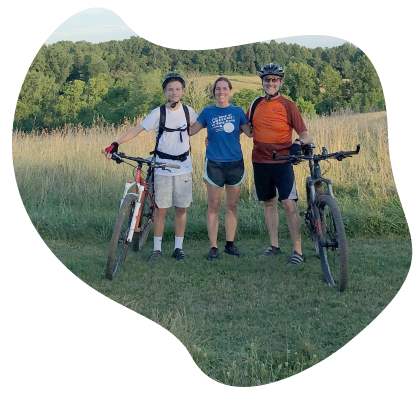
14. Do you get some sunshine most days?
In the days of the caveman, sunlight guided his or her body’s rhythms. Through evolution, you have inherited that same physiological response. Not too long ago, our forefathers worked sun-up to sundown and slept through the dark.
Enter the advent of artificial light (light not generated by the sun), and we start messing with our bodies’ natural circadian rhythms.
I am not suggesting we limit our activities to the daylight hours, but I am suggesting getting out in the sun to trigger natural hormone production and release in your body.
Studies suggest that exposure to sunlight increases the body’s production of serotonin and vitamin D, which can improve your mood, reduce anxiety and help you focus.
Vitamin D is a crucial component of a healthy immune system, among other things I will discuss in more detail below.
These important benefits might add further value to the walk first thing in the morning with your partner. Studies show that 10-30 minutes of unobstructed (no sunglasses) exposure to sunlight during forward ambulation (aka walking or running) before 10am has profound effects on hormone regulation, energy levels, mood, and you guessed it…sleep quality). If you can’t walk first thing in the morning, I’d like to underscore the benefits of that walking meeting concept I’ve talked about in my mindful leadership articles.
If getting a few rays of sunlight is hampered by the meteorological limitations of your locale and your mood is waning, there are now a plethora of natural light boxes readily available on Amazon. If you’re vetoing Amazon, they’re also available elsewhere.
There are also many other benefits to sunlight, including the skin’s ability to create Vitamin D when exposed to even relatively small amounts of sunlight. This has been scientifically proven to significantly benefit bone density, reduce the incidence of some cancers (not skin cancer obviously), help heal some skin conditions, and much more.
The key is to protect your skin if you’re going to be out for extended periods, and moderate your sun exposure.
Most of these numerous and varied positive side effects of direct and indirect sunlight exposure ultimately benefit sleep. So if you can wake up to the morning sun (this reinforces your natural circadian rhythms) and enjoy the benefits of getting outside during the course of the day, you’ll reap the benefits of better sleep and improved health. A word of caution; like most things, exercise moderation; that fiery ball in the sky has a downside too.

15. Do you have the ability to calm your mind before trying to fall asleep?
Even if you’re doing well on most areas of this list of sleep principles, calming your mind can sometimes be the most challenging of all.
If you’ve got a lot on and your mind is going through all the things you didn’t get done today, or you need to get done tomorrow, a list can help.
Even if you’re not a list person, have a notepad by your bed and just scribble down the open items you’re worried about, or afraid you’ll forget, and use this as a tool to hopefully quell anxiety linked to your to do list.
Tantamount to using this simple tool is cultivating the intrinsic understanding that you can’t do anything about those things tonight; that you need sleep to be effective, and worrying about those things rolling around in your mind is not going to help getting across them tomorrow. This is a state of understanding that again is not easy to attain, but is essential to letting things go before you go to sleep.
Other techniques I have touched on in previous articles involve mindfulness practices such as breathing techniques and various forms of meditation.
Breathing is a simple tool that can be employed without even getting out of bed, or changing position. I find rhythmic breathing to help immensely, and that involves a count of the breath in and then a count of the breath out. This is usually done silently (your partner may appreciate that courtesy) and can be a slow three count or a slow four count, or whatever feels comfortable. Most importantly, I encourage you to really focus on the breath and keep it slow, even and rhythmic.
You can combine this breathing routine with a mindfulness meditation before going to sleep. This is where you focus on your breathing and consciously observe and release other fleeting, or nagging thoughts. If a thought pops into your head, observe it, let it go and return your focus to your breath. Even though it is recommended that you sit upright for most meditations, I practice mindfulness meditation when going to sleep in my natural sleeping position.
I also know a number of people who meditate more formally before they go to bed. They use a formal meditation practice, be it mindfulness of transcendental meditation to calm their mind before going to sleep, This can take as little as 5 minutes and as much as an hour for some. As I constantly repeat, it is what works best for you.
Lastly, if there’s a particular area of stress or a recurring theme inhibiting your ability to calm your mind before you go to sleep, this may require addressing with a professional counselor.
Common sense would suggest that when you’re tired or sleep deprived, that might not be the best time to try and solve most problems. If you have an overwhelming area of recurring stress impacting your ability to sleep, I recommend finding a therapist. Psychology Today has a great site where you can enter your zip code and it provides a broad range of therapists and filters.

What is hopefully apparent from this article is the breadth and depth of things you can do to improve the quality and quantity of your sleep.
When it comes to lifestyle adjustments, I always recommend using baby steps.
Pick an easy goal off your list of challenges, and tackle it little by little. You’ll likely note benefit from incremental changes you make in any one of these elements. And if you don’t, keep chipping away or try another item on your laundry list.
Note: The information provided by the author in this article is designed to provide helpful tips on the subjects discussed. Any references or recommendations by the author are not meant to diagnose or treat any medical problem and are provided for informational purposes only. Furthermore any links, recommendations do not constitute a formal endorsement, or any assumption of liability by the author.
Related:
“How to Achieve the Ultimate State of Wellness”
“What Does a Healthy Community Look Like Beyond COVID?”
“Wellness Real Estate Return On Wellness (ROW) = Return On Investment (ROI)”
“Does Our Built Environment Affect Our Relationships?”
Resources to Help You Through Uncertain Times:
-
Strategies to Follow as You Re-Open or Re-Imagine Your Business in the New COVID-19 Reality
-
How to Transcend Troubling Times
-
4 Tips to Proactively Address the Stress of COVID-19
-
Change Management During Uncertain Times
-
26 Non-Negotiables, Opportunities & Tips for Surviving and Thriving During and After the COVID-19 Pandemic
-
30 Business Sectors That Are Booming During the COVID-19 Pandemic
-
Overcoming F.E.A.R. During COVID Uncertainty
-
Virtual Training During and Beyond COVID-19
-
Virtual Stand-Up: A Simple but Powerful Communication Tool for You and Your Team During COVID
-
13 Tips to Help Your Business Survive the Coronavirus Pandemic
Fill out the form below and receive a PDF download of "6 Key Strategies to Engage Untapped Fitness and Wellness Market Segments"
Let's Connect!
CUSTOMER EXPERIENCE, TEAM ENGAGEMENT & WORKPLACE WELL-BEING: AFFINITY OS™ | WELLNESS INTEGRATION | MINDFUL LEADERSHIP: "THE AFFINITY PRINCIPLE"
0475 866 592

The Affinity Principle™ by Grant Gamble presents a formula for business success through a people-centric, mindful leadership approach.
PEOPLE FIRST, ALWAYS.





